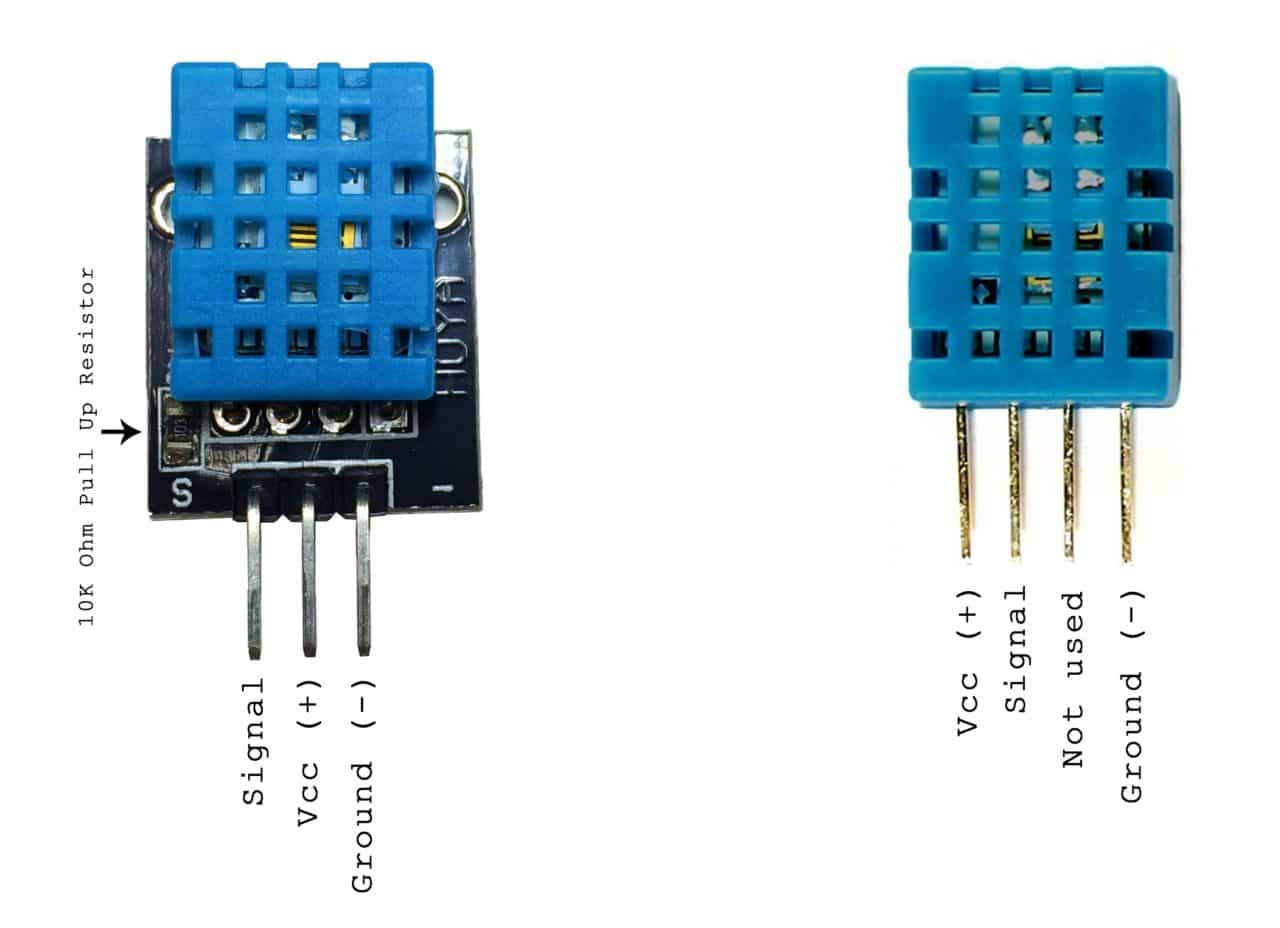In the project CryoEM Sample Preparation, the specimen is preferred to be in the environment with room temperature (22°C) and relative humidity between 30% and 50% before being frozen.
DHT11 and Infra Red Thermometer are used for measuring temperature and relative humidity based on Arduino IDE and thermocouple might be applied in the future work. This page introduces the characteristics of these sensors.
DHT11


DHT11 is a basic and low-cost digital temperature and humidity sensor, using a capacitive humidity sensor and a thermistor to measure the surrounding air. DHT11 is designated to work for 20-80% humidity readings with 5% accuracy and 0-50°C temperature readings with ±2°C accuracy, which properly fits the requirement of this project.
DHT11 detects relative humidity by measuring the electrical resistance between two electrodes. The relative humidity is the amount of water vapor in the air versus the saturation point of water vapor, expressed as a percentage. At 100% RH, condensation occurs and at 0% RH, the air is completely dry. The capacitive humidity sensor is a moisture holding substrate with electrodes on the surface. When the substrate absorbs water vapor, it will release ions and increase the conductivity between the electrodes which can be measured by the circuit.
Thermistors are variable resistors that change their resistance with temperature. They are small, durable and sensitive at low temperature. Thermistors have moderate temperature range (up to 150°C) and low-to-moderate cost (depending on accuracy). DHT11 is a low-cost device and the sensor reading can be up to 2 seconds. It measures temperature with a Negative Temperature Coefficient (NTC) thermistor in which resistance is negatively correlated with temperature.
Check this page for more details.
Infra Red Thermometer


Objects with the temperature higher than absolute zero will radiate electromagnetic waves. The higher the temperature of the object, the more infrared radiation it emits, and the stronger energy of the radiation. The infrared sensors MLX90614ESF-BAA used in this project apply thermopile detectors to convert that energy into electrical signals based on Seebeck effect, and signal conditioning standard parts are integrated together to realize high sensitivity, accuracy and resolution of the sensor. Due to the advantages illustrated above and short response time, the infrared thermometer is used for PID temperature control in this project. Several main parameters of MLX90614ESF-BAA are listed below:
- Operating temperature range: – 40 to 85 °C
- Output resolution: 0.14 °C
- Accuracy: ±0.5°C around room temperature
Thermocouple
Thermocouple is the most commonly used temperature sensor with the widest range (from -200 °C to 1750 °C), low-cost, and low accuracy. It has quick response time but complex signal conditioning (cold-junction compensation and amplification). Besides, it needs to be calibrated before use. Because of the small size of thermocouple, it would be applied to detect the temperature of the ethane container in the future.
About the Author
This page was written by Changxin Yu. Check out her personal page.
